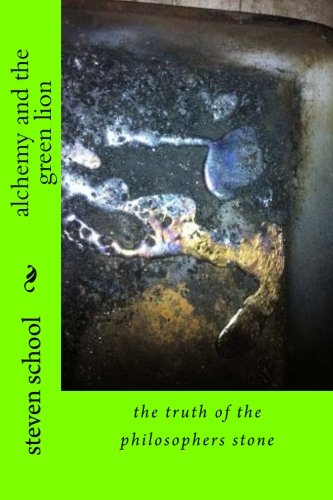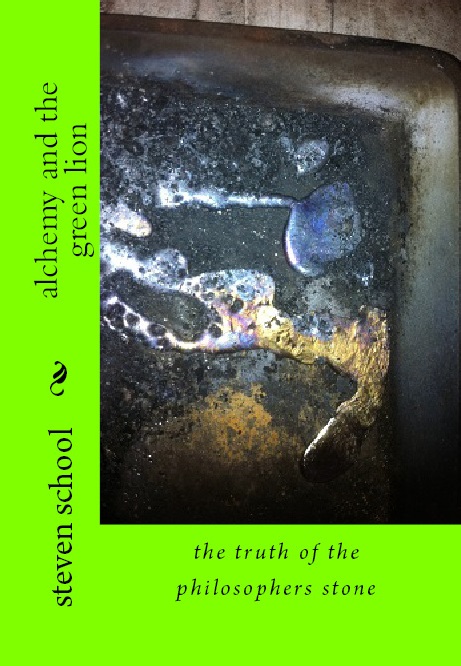The black phase of the alchemical process.
Tag: alchemical
Growing my Alchemy Business with Social Media Marketing
Landing pages are key in YouTube growth performance for my alchemy channel. Subscribe to my YouTube channel and help support the continued restoration of alchemy.
What is alchemy? Alchemy is an ancient science based on the creation of The Philosophers’ Stone. The goals of alchemy were to find an elixir of youth, and elixir of life, The Stone of Knowledge (philosopher’s stone) and to transform base metals into gold or silver (transmutation).
Ripley’s Bosom Book – Alchemy Manuscript
Bosom Book of Ripley – Alchemy Book on The Metal Acetate Path of Alchemy. https://amzn.to/3m3Od7F
Someone recently told me about an old alchemy manuscript called Ripley’s bosom book. I was told this is an alchemy book on The Metal Acetate Path of Alchemy regarding the philosopher’s stone. I have years of experience on philosopher’s stone research as well as hands on laboratory alchemy experiments. I have published books on the subject of alchemy and taken time to examine hieroglyphs, even studying root words related to alchemy history. I have pieced together the aspects of alchemy without having been through any mystery school, without ever being part of any secret society or organization. Finding peace and solitude in my own work has been key to contemplating the ancient hermetic science. Rare alchemy manuscripts have been like a jigsaw puzzle often offering more to the confusion of alchemy than to any basic understanding of the art. I began my official entrance into the physical aspect of practical alchemy experiments in 2008 after much contemplation over the years. It was the beginning of a journey that led me to begin publishing on alchemy around 2012. Since then i have been contacted by people from around the world in regards to my alchemy work and publications. I have videos of some of my alchemy experiments on YouTube. I did not write or publish Ripley’s Bosom Alchemy Book. I was recently told about it, gave it a read, and recognized the tell tale signs of alchemical experience in the authors words. The descriptions of the materials at different stages of the processes, colors of the great work. I have a deep understanding because of my own experience. Alchemical manuscripts or (laboratory notes) were often written in hurried fashion omitting tons of information since they were meant for the alchemist to remind himself of key points in his or her works as years roll by and things get forgotten. The alchemist could simply glance over his old notes to refresh his mind back to key points in old experiments. In modern alchemy we have video such as YouTube for this. From Ripley’s book on alchemy i can envision the different processes and paths that ancient alchemist’s leading up to the medieval renaissance period went through in their laboratory experiments, because i have years of experience in the metal acetate path of alchemy performing myriad experiments over more than a decade of time. The color changes described in the great work along with written descriptions of alchemical substances in Ripley’s book connects my mind from reading the words to seeing it. This brings me back to long lost words from the alchemist Theophrastus Paracelsus about though individual alchemists had their own methods they all led to the same end. Some alchemist’s wrote separate and purify alchemical elements to a high degree of purity, noting specific color changes to be seen, others wrote filter or separate nothing. Some wrote about their elaborate processes while others scoffed and touted the one vessel method of alchemy. This explains why there have been so many treatises written on alchemy processes, short paths, long paths, slow methods, abbreviations in the great work, the dry path of alchemy, the wet path of alchemy. Calcinations, Putrefactions, Distillations, Sublimations, Congelations, Coagulations, Fermentations, Incerations, Multiplications ETC. Paracelsus may have summed it up best, though alchemist’s differed in method, they worked toward the same end. This also explains the different colors assigned to ‘The Philosopher’s Stone”, differering alchemical methods led to a different appearances of finished products, also various stages of the great work affected the color changes in material. Transmutation powder described in old alchemy manuscripts on “Alchemy Transmutation Stories” such as that of Alexander Seton and Michael Sendivogius depicting a crystalline metallic powder, saffron in color and of considerable weight, oily or yellow in appearance depict the work of an adept alchemist master of the short path (ARS BREVIS) of alchemy. The difference between oily or lemon yellow depicts whether or not the alchemist material had been wrapped in wax or stored in another container. A white stone like wax, or even a red stone like red glass or red crystal, can depict a long slow path of alchemy in which the alchemist did extensive personal work with the materials, taking great lengths of time to complete their work, achieving a great level of purity in alchemical materials. Some alchemist’s shortened even this with the development of harsh acids which could dissolve ingredients faster. The original long slow wet method of alchemy, sometimes called “The ARS LONGA” in its original form, would take a long time to complete. Alchemist’s developed various methods, short cuts in the great work, and each of these was called “an abbreviation in the great work of alchemy” Article written by Steven School. See videos and books below. Do not try this at home. Not for consumption. #stevenschoolalchemy

The Bosom Book of Ripley, was not written or published by Steven School. The author name is listed as Eirenaeus Philalethes. “As an Amazon Associate I earn fees from qualifying sales”. https://amzn.to/3Sp5GDq
The Bosom Book Of Sire George Ripley: A Treatise On Alchemy.
This scarce antiquarian book is a facsimile reprint of the original. Due to its age, it may contain imperfections such as marks, notations, marginalia and flawed pages. Because we believe this work is culturally important, we have made it available as part of our commitment for protecting, preserving, and promoting the world’s literature in affordable, high quality, modern editions that are true to the original work.
What is the Meaning of Salt in Alchemy? – Alchemical Salts
https://amzn.to/3xgGlBU ALCHEMY BOOKS
https://amzn.to/3RO10a1 ALCHEMY BOOK GREEN LION

“As an Amazon Associate I earn fees from qualifying purchases”.
Alchemy Methods – Distillation
The alchemical process of distillation explainer video.
Secret Alchemy Laboratory Hidden Methods.

Alchemy Book https://amzn.to/3VqKa17
Freemason Secrets
Alchemy And The Secret Fire Of Nature
A secret fire not wetting the hands and not burning the matter. Alchemy of Steven School. Do Not Try This At Home. For The Steven School Alchemy Website Click Here
alchemical keywords alchemy wind furnace, alchemy secret oven, alchemy secret fire, alchemy secret fire of nature, alchemy not wetting the hands, alchemy secrets of the philosopher’s stone?, the vessel of nature, the vase of philosophy, steven school alchemy
Disclaimer- This video does not constitute advice of any type nor is it intended for any specific person. Do not try this at home. Not for human consumption.
is the philosophers stone used to make gold?
is the philosopher’s stone used to make gold? www.howtomakethephilosophersstone.com
Alchemy
Alchemy is about the purification of elements which was called the exaltation of matter. The secret alchemical process or secret alchemy recipes called for circulation which was a repetition of natures rain cycle in the alchemical glass. Today this might be compared to an ecosystem. Solve et coagula, to dissolve and coagulate. The highest form of purification in alchemy is in modern times associated with recrystallization. Throughout the history of alchemy multiplication (exaltation) of alchemical “philosopher’s stones” has been depicted in images or phrases about the spinning, turning or rotation of the alchemical wheel combined with the secret alchemy formula of fire and water coupled with earth and air. Fire and water acting upon earth in the presence of by air. Article written by Steven School. Author of The Philosopher’s Stone Book, Alchemy.
























